

The Mythopoet's Manual - Contents. A quick overview of the Hero’s Journey » Jordan McCollum. Planning out a novel?

Be sure to join my newsletter for a FREE plotting/revision roadmap, and check out the full series on plotting novels in a free PDF! Over the last two weeks, we’ve looked at two plotting methods. One helped us parse our story into parts, the other helped us grow it from an idea. But a weakness of both is that neither really tells us what kind of events we need in a story—especially in the sagging middle. The Hero’s Journey is based on the universal archetype work of Carl Jung, as applied by Joseph Campbell. I first learned about the hero’s journey in high school. A Simple Novel Outline. Just as every tree is different but still recognizably a tree, every story is different but contains elements that make it a story.

By defining those before you begin you clarify the scope of your work, identify your themes, and create the story you meant to write. At Norwescon 2011 I sat in on a session called Outline Your Novel in 90-minutes led by Mark Teppo. I’ll give you the brief, readable, synthesized version. Answer 9 questions and create 25 chapter titles and you’re there. How to Develop Plot in Fiction. To plot or not to plot. Before your begin writing your novel, you have to have your plot outlined and fully developed.
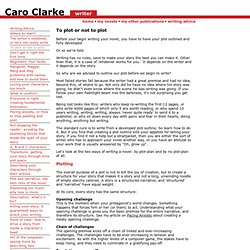
Or so we're told. Writing has no rules, save to make your story the best you can make it. Other than that, it is a case of 'whatever works for you.' It depends on the writer and it depends on the story. Plot: Developing Events in Your Story. I created a solid plot and various sub-plots for my story.

Learning to create a convincing plot was difficult, and several aspects of the sub-plots will change as I develop the characters and setting more deeply in the novel. Some of the resources in this blog entry could help you to create and develop a compelling plot to your story. I hope you will find some solid information to help you begin a rich and satisfying journey in writing your first book. Definition of Plot. Using a Story Map to Write a Book: Method Based on the Classic Narrative Structure in Novel Writing.
Many writers plan the characters, goals, and conflicts before they write a story.
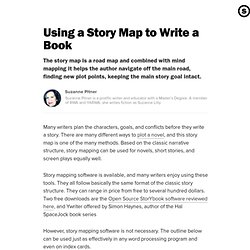
There are many different ways to plot a novel, and this story map is one of the many methods. Based on the classic narrative structure, story mapping can be used for novels, short stories, and screen plays equally well. Story mapping software is available, and many writers enjoy using these tools. They all follow basically the same format of the classic story structure. They can range in price from free to several hundred dollars. However, story mapping software is not necessary. Story Generator. Stories This is a satire.
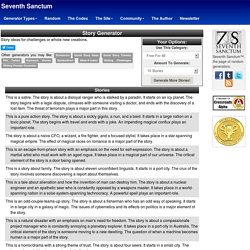
The story is about a disloyal ranger who is stalked by a paladin. It starts on an icy planet. The story begins with a legal dispute, climaxes with someone visiting a doctor, and ends with the discovery of a lost item. How to Plot and Write a Novel: Plan Your Novel Writing with the Snowflake Method. Many novelists mull over story ideas, letting them ripen and develop over time.
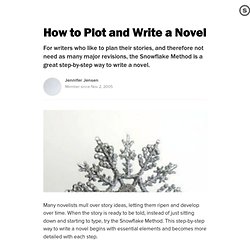
When the story is ready to be told, instead of just sitting down and starting to type, try the Snowflake Method. This step-by-step way to write a novel begins with essential elements and becomes more detailed with each step. Essential Elements for Novel Structure. Plot Scenario Generator. How to Plot and Write a Novel: Plan Your Novel Writing with the Snowflake Method. The Thirty-Six Dramatic Situations. The Thirty-Six Dramatic Situations is a descriptive list which was created by Georges Polti to categorize every dramatic situation that might occur in a story or performance.
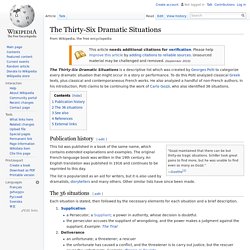
To do this Polti analyzed classical Greek texts, plus classical and contemporaneous French works. He also analyzed a handful of non-French authors. In his introduction, Polti claims to be continuing the work of Carlo Gozzi, who also identified 36 situations. Publication history[edit] “Gozzi maintained that there can be but thirty-six tragic situations.
This list was published in a book of the same name, which contains extended explanations and examples. The list is popularized as an aid for writers, but it is also used by dramatists, storytellers and many others. The 36 situations[edit] Each situation is stated, then followed by the necessary elements for each situation and a brief description. See also[edit] References[edit] External links[edit] Plot Scenario Generator. Tension - StumbleUpon. Hook Your Readers With Tension By Laura Backes, Write4Kids.com Tension.

Without it, life would be—let's face it—boring. So would fiction. Figment: Write yourself in. How to Write Conflict: Understanding the Most Important Part of Writing Fiction - StumbleUpon. The struggle and change of your protagonist is what makes a story a story.

Many writers get caught up in giving their readers details of crisis when the true draw of a story, the thing we as readers want to know, is the metamorphosis of the character. Conflict Versus Crisis. How to Avoid Plot Cliches: Tips for Writers on Increasing Their Chances of Publication. Nobody ever said plotting was easy. And because it's not easy, an alarming number of writers settle for so-called 'plot cliches'. Although the cliched situations that follow can appear in any story, some are more likely to be seen in a particular genre. For example, romance writer Francesca Hawley's blog has an amusing post on Heroines Too Stupid to Live. How to Use a Plot Notebook When Writing a Book: A Simple Plotting Tool to Make Fiction Writing Easier - StumbleUpon. The plot notebook should be something a writer can scribble ideas into, cart around in a backpack or a handbag, throw in the glovebox of the car or keep (all friendly-looking and dog-eared) next to the computer.
The emphasis is on user-friendly. Face it, anything that looks too formal and imposing is not likely to be used... like those oh-so-beautiful notebooks that writers love to give each other as gifts, which then stay on the shelf because they're too nice to write in! What Kind of Notebook Works Well for Plotting Your Book? Evolution of Four Stories. The Thirty-Six Dramatic Situations. Chekhovs gun: a useful plot device. - StumbleUpon. By Glen C. Strathy Chekhov's Gun is a plot device whereby you introduce an item in the first part of your novel that doesn't seem important to the story at the time, but takes on greater significance later on. The principle was expressed by the great Russian playwright, Anton Chekhov, who said that if you put a gun on stage in the first act of a play, it should be fired in the second act.